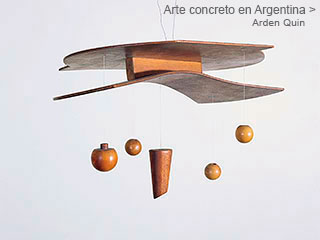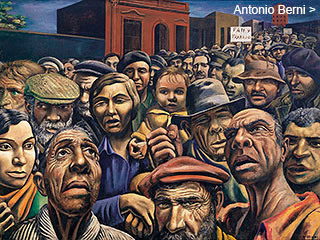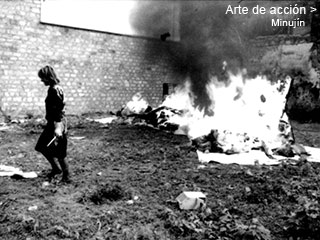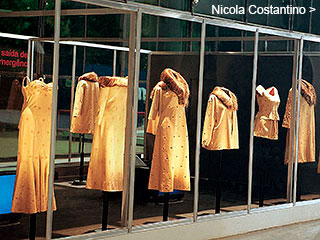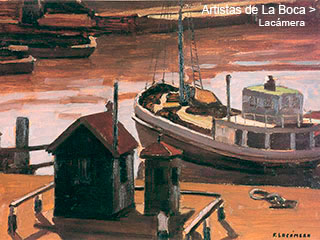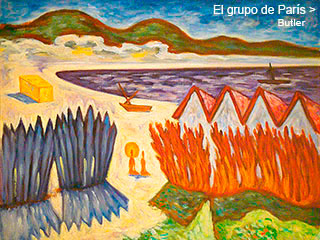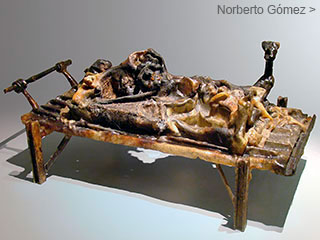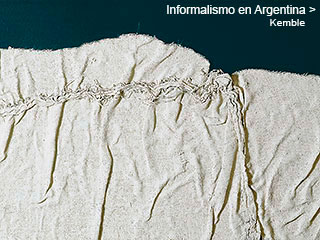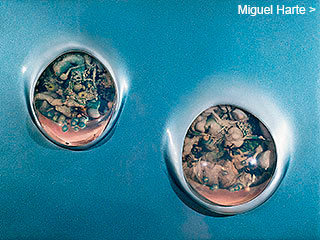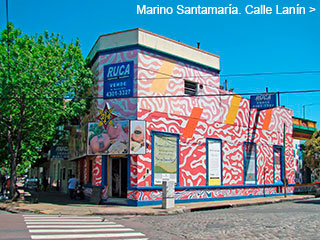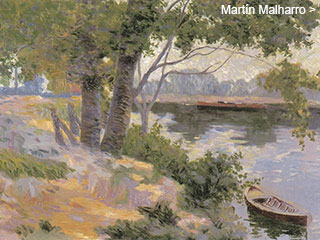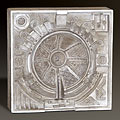Menú
Algunos dossiers
Norberto
Gómez
Gómez
by
Adriana Lauria and Enrique Llambías
March 2006
March 2006
This dossier covers forty years of Norberto Gómez’s work, from his minimalist constructions of 1966 and 1967 to the anti-monuments he produced in polyester and bronze in the nineties. In between, his series of “guts”, organic remains, weapons and “plasters” punctuate a long career that has enriched the Argentine art scene.
1988
Juan Lepes, with whom he has worked in advertising campaigns on many occasions, commissions a mural for the culture centre Moscú – which never opened, but would have operated in the basement of the dance club Paladium, in central Buenos Aires. It comprises plaster pieces which are cast in clay moulds, carved and covered in polychrome oil paints of earthen-grey colours. Miguel Briantes points out that they look like the baroque mouldings in old buildings:
From up close, the fragments of matter become an Aleph of numbers, cells, the ritual sites of an unnamed religion, taps, drainpipes, fuses, a face: “What we see and don’t register: the drain by the kerb, the wires that govern our lives. What remains at the bottom of memory,” says Gómez...
The mural originally comprised sixteen plaques of 50 x 50 cm, half of which were used years later in another work. The reliefs are done from “reverse” moulds, where that which will be convex is conceived of and modelled as concave. Thus, the resulting image purports to reflect the flip side, the hidden side
more


